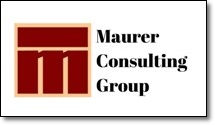November – December 2021 Volume 17 – Issue 104
Build Your Know-Like-Trust Factors
A number of times we have mentioned the Know-Like-Trust factor in our newsletters and in other articles on the ‘Designing Strategies’ blog. These three important elements go a long way in creating a comfort zone for those already in, or considering, doing business with you. One of the three being evident in your marketing helps, but combine all three and you have hit a homerun.
Trust is important for all of us. We want to deal with people we feel we can trust. No one wants to deal with someone they feel will cheat them. Trust raises our confidence level that we will get exactly what we want or need. The truth of the matter is, it takes time to build trust. Seldom is it an immediate feeling when first meeting s0me one. On the other end, once you lost trust it takes a very long time, if ever, to build it back up.
Help Customers KNOW About You
 Getting to know you and your team better as human beings puts you on solid ground. We all feel more comfortable dealing with people we already know something about. Getting a personal recommendation from a friend or colleague is great. But, that is not always available. A next step would be to include some testimonials on your website from satisfied customers. Include a headshot of the person with the testimonial is even better. Or, use a recording of their voice instead of just text.
Getting to know you and your team better as human beings puts you on solid ground. We all feel more comfortable dealing with people we already know something about. Getting a personal recommendation from a friend or colleague is great. But, that is not always available. A next step would be to include some testimonials on your website from satisfied customers. Include a headshot of the person with the testimonial is even better. Or, use a recording of their voice instead of just text.
Marketing videos show how we look and sound. A smile on your face, sparkle in your eye or lilting sound of your voice while you share tips all fit this bill. Likewise, a podcast provides at least your voice. Personal inflections can show your sense of humor. How you use different tones helps listeners understand the most important parts of your delivery.
Help People LIKE You With Marketing
 What makes us like another person? Certainly getting to Know each other better helps. The more we know about another person, the more we are able to see our common denominators. What we both enjoy, even a hairstyle or clothing style preference can help with our Like factor. “We wear the same brand shoes – she must be OK.” “I love that jewelry she is wearing…” You get the idea. The more we have in common, the more we are alike – and likeable.
What makes us like another person? Certainly getting to Know each other better helps. The more we know about another person, the more we are able to see our common denominators. What we both enjoy, even a hairstyle or clothing style preference can help with our Like factor. “We wear the same brand shoes – she must be OK.” “I love that jewelry she is wearing…” You get the idea. The more we have in common, the more we are alike – and likeable.
Shared interests can also boost the Like factor. Pictures of you and your staff on your website puts faces to who will taking care of your customers. Add short bios of each person and their job title. Ask about their favorite ‘something’ as part of the bio blurbs. Build that likeability factor.
If your company supports certain charities or events, show some pictures of the team at work. Take a day or two each year to work on a local Habitat for Humanity project. Share pictures to show people. How about support for animal rights by working at a pet shelter walking dogs. Take pictures and share them. Younger generations put a lot of value in working with companies who support a cause.
Improve your all-important TRUST factor
 A few years ago I was working on a presentation about ‘buying triggers’. So much about buying is based on emotion, which brings neurology into the mix. It’s all in the brain, controlled by neurons. One of the books I was researched was Brainfluence: 100 Ways to Persuade and Convince Consumers With Neuromarketing by Roger Dooley. In that book, I found something related to the Know-Like-Trust factor that made a big impression on me.
A few years ago I was working on a presentation about ‘buying triggers’. So much about buying is based on emotion, which brings neurology into the mix. It’s all in the brain, controlled by neurons. One of the books I was researched was Brainfluence: 100 Ways to Persuade and Convince Consumers With Neuromarketing by Roger Dooley. In that book, I found something related to the Know-Like-Trust factor that made a big impression on me.
Dooley wrote that with just “10 words that build trust” we can make big changes in what potential clients think about us. More specifically, how those ten words would influence Trust. He recommends that at the end of an advertisement, just add the ten words.
“You can trust us to do the job for you.”
That’s it. Just those ten simple words will raise consumers’ views of your trustworthiness. Just state that simply and clearly that they can trust you. No need to add extensive claims of accuracy, quality or other promises.
One company using those ten magic words showed significant upswings in prospect and customer views. Statistics show these areas of improvement:
- Belief in Fair Pricing rose by 7%
- Caring went up 11%
- Belief in Fair Treatment increased 20%
- Assumptions of Quality rose 30%
- Views of Competency climbed 33%
Even at the lower end of their chart, Fair Pricing and Caring increases were significant. But, when you see improvement ratings rise 20%, 30% and 33%, we can see we should be doing this – now! So many of us worry about warranties and guarantees. But, you can move assumptions up this significantly just by assuring customers that you are going to take care of them.
Know-Like-Trust – What Can They Hurt?
We are in a ultra-high competitive environment. The economy is spiking and supply chains have gone totally wacko. What have you got to lose? Get to Know prospects better and build relationships leading to long-time, loyal customers. If prospects find a reason not to Like you, odds of them buying diminish. Everyone wants to deal with companies they can Trust. All three factors create a win-win business relationship.
Remember that buying and sales are very much based on neuroscience. Emotions are more important in buying decisions than price. Really. And, emotional buying triggers are all built into the neuroscience in your brain. Making a purchase is much less based on logical thinking than it is on emotion. Adapting this approach to your marketing and sales processes is something you need to do. If you can’t figure it out alone, get some help.







